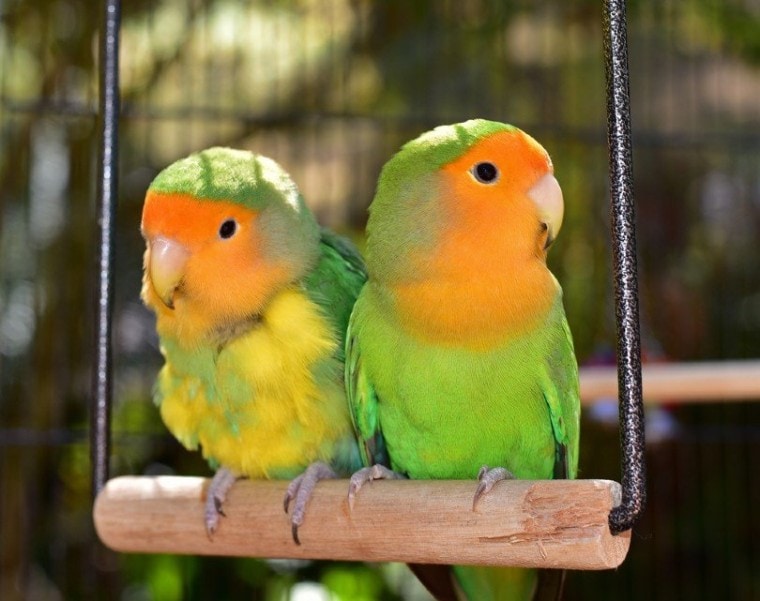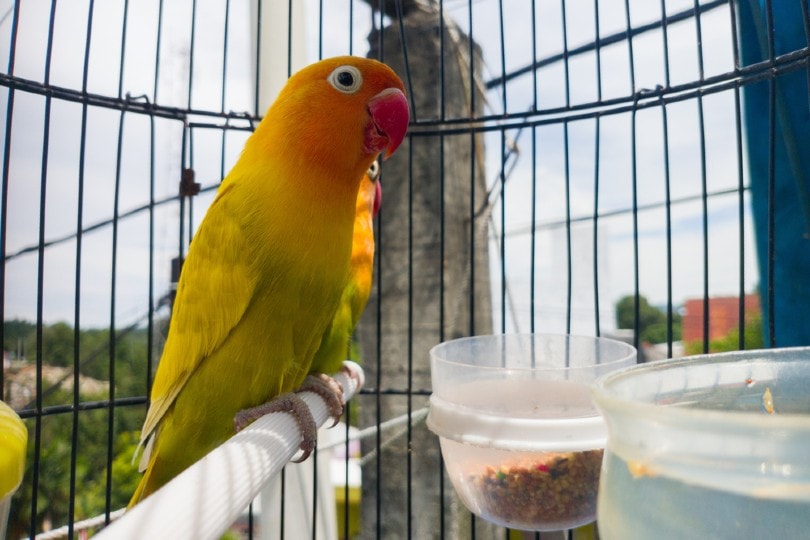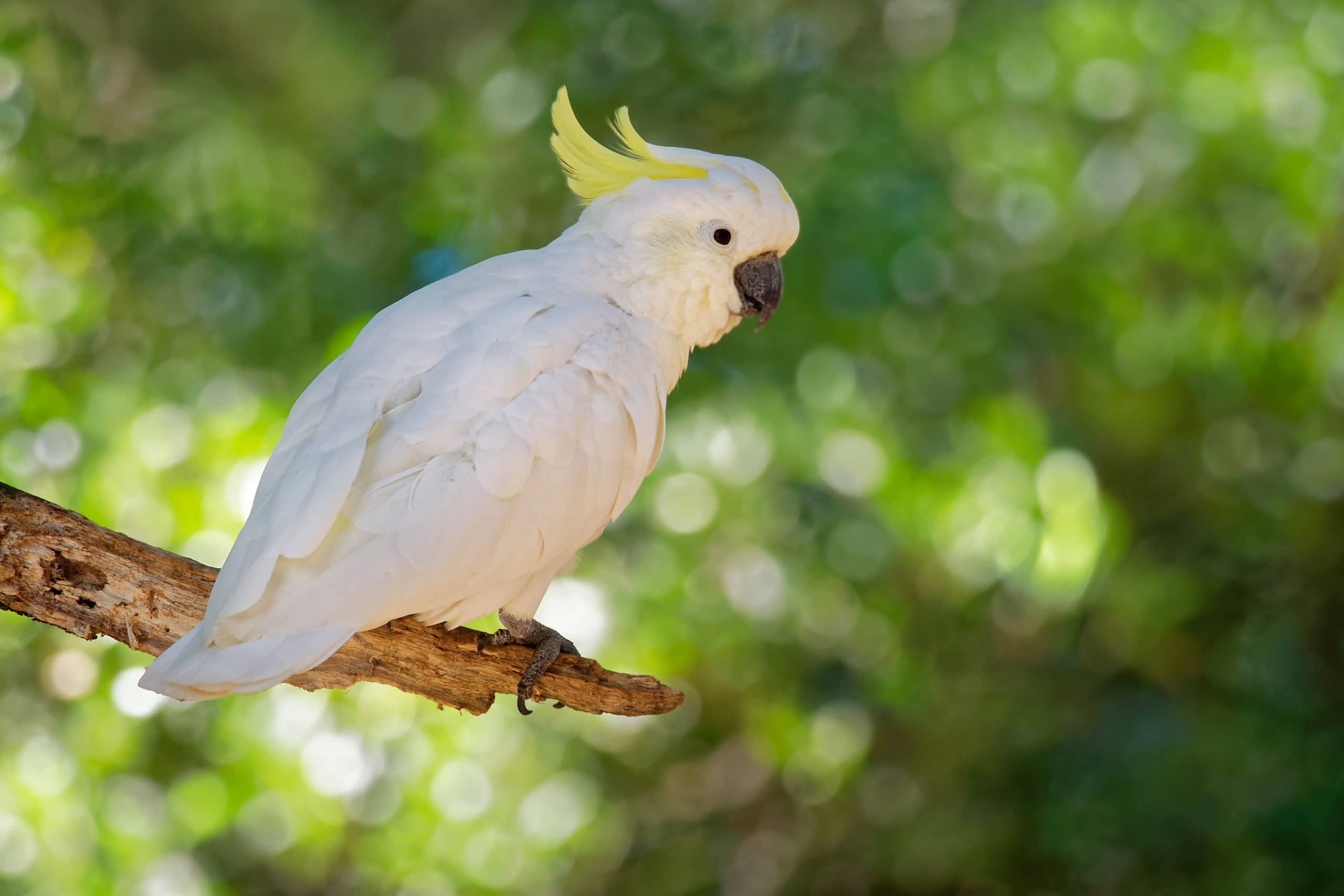
Birds are incredible creatures. They’re smart and fly with consummate grace. And who could possibly forget the colors these beautiful creatures display, from deep blues to vibrant greens? Birds play critical roles in many ecosystems, including the Himalayas and the Gulf of Mexico.
These gorgeous, lively creatures are popular pets in the United States. In 2017, there were around 20.6 million pet birds1 in the country. But did you know that very few species have been domesticated? Geese, ducks, chickens, parakeets, pigeons, cockatiels, and turkeys are some of the best-known examples. Parrots and lovebirds have never been domesticated, although they can be tamed. But lovebirds, for instance, require consistent handling to remain tame.
Some parrots enjoy being around people but never take to being handled or petted. Yes, it’s complicated! But let’s start from the beginning, with the domestication of the first birds around 7,000 years ago. Read on to learn more about the domestication of birds.
What Was the First Bird to Be Domesticated?
Geese were the first avian species to be domesticated. A detailed study published in the Proceedings of the National Academy of Sciences determined that geese were being raised by humans in the lower Yangtze river region as early as 7,000 years ago.
Scientists used to think chickens were the first birds domesticated by humans, a theory debunked by the discovery of domesticated goose bones in human settlements in the lower-Yangtze river region. Evidence suggests that birds were first domesticated in China in the Stone Age.
Geese weren’t native to the lower-Yangtze river region during the Early and Middle Holocene eras. But scientists found juvenile goose bones at a site in the area. Upon further evaluation of the collagen content for possible hints about diet, scientists determined the geese had been raised on local fare.
There was also evidence of multiple generations of geese being bred locally. Radiocarbon dating was used to confirm the age of the bones from 5000 B.C.
Chickens were first domesticated in Southeast Asia during the Bronze Age, sometime between 1650 B.C.. and 1250 B.C. based on evidence from Ban Non Wat, a Bronze Age dry rice farming site in modern Thailand. Dry rice farming relied on rainfall for irrigation and often attracted wildfowl, which were the ancestors of domesticated chickens.
A tight relationship exists between the spread of dry rice farming techniques (and the introduction of grains such as millet) and an increase in the number of domesticated fowl. Chickens are currently the most common domesticated bird in the world.

What Does Domestication Mean?
A domesticated bird is an animal that has been selectively bred by humans, often for characteristics such as color, behavior, or body shape. There’s usually quite a bit of confusion when describing whether a bird has been domesticated or not, as many non-domesticated birds can be tamed, including parrots.
It is easy to confuse the behavior of a tame bird with a domesticated one, as many domestic birds have been bred to feel comfortable around humans. Commonly domesticated birds include turkeys, chickens, geese, pigeons, parakeets, doves, cockatiels, and ducks. Parrots can be tamed but have never been domesticated. Most pet finches and canaries are domesticated.
But birds of all sorts raised in captivity often become pretty tame and attached to their owners, which is often interpreted as domestication. The relationship results from socialization instead of millennia of selective trait breeding. Wild or non-domesticated species like parrots are capable of being socialized into accepting human contact.
Humans have traditionally used domesticated birds as sources of food as well as for clothing and decoration. Feathers from domesticated geese have also been used for other purposes, including writing. During the Middle Ages, goose quills were frequently used for writing on parchment.
Domestic pigeons have been tapped as messengers, and scientists have found evidence of cockfights from as early as 517 B.C. There’s even a theory arguing that chickens were, in fact, first domesticated as fighting animals, only later becoming accepted as a ready source of protein.
Are All Pet Birds Tame?
Most pet birds are (or can become) tame, mainly if they receive lots of human love and attention. Parrots, including lovebirds, often become relatively tame and attached to their owners over time. But not all enjoy being handled by humans. Parrots become tame due to their innate sociability, but without consistent interaction with humans, they will begin to revert to wild behavior patterns.
Parakeets and doves have both been domesticated, making them easy to handle and tame.

When Were Birds First Kept as Pets?
There’s evidence that parrots were kept as pets in Brazil more than 5,000 years ago. Alexander the Great brought the first parrots to Europe when he returned to Greece after conquering India. Henry VIII had a pet African gray parrot.
Parrots and other tropical species became popular as status symbols during the Age of Exploration, as wealthy individuals often kept exotic animals for display. Birds were the most popular indoor pets in the United States in the 1900s.
Parakeets first became popular pets during the 18th century. They’ve been held captive for so long that most experts consider them domesticated. Humans have bred doves for thousands of years for personality characteristics such as trainability and physical traits such as color.
Final Thoughts
Geese were the first birds to be domesticated. Avian domestication first occurred about 7,000 years ago in a lower-Yangtze river valley village now located in modern China. Chicken domestication occurred approximately 2,000 years after humans began to breed and raise geese.
Many birds, including parrots and lovebirds, can be easily tamed and happily integrated into the family unit, but that’s due to their innate social nature and not the result of selective trait breeding. Lovebirds and parrots will revert to their wild ways if they don’t regularly interact with humans.
See Also:
Featured Image Credit: Tracy Starr, Shutterstock








